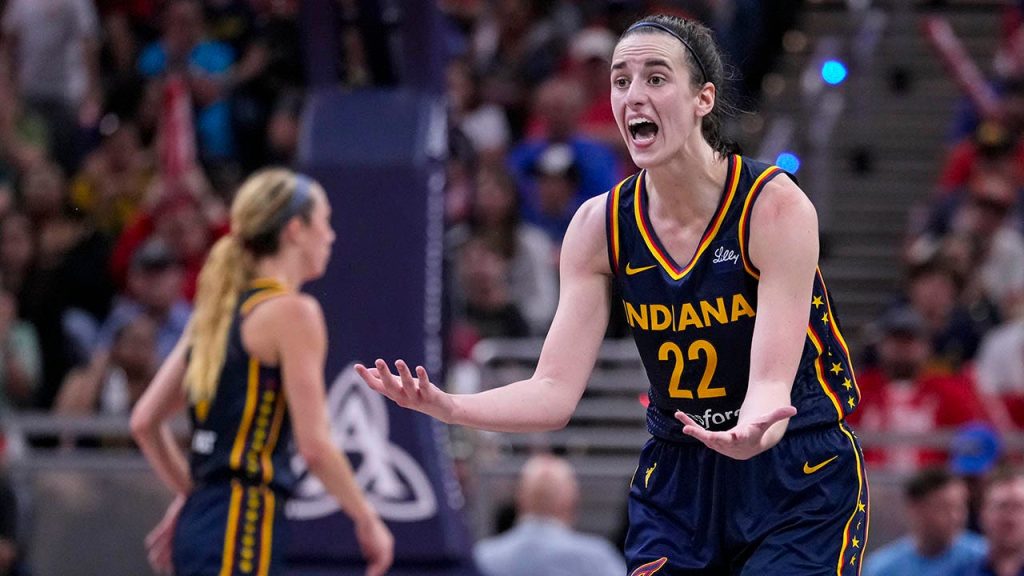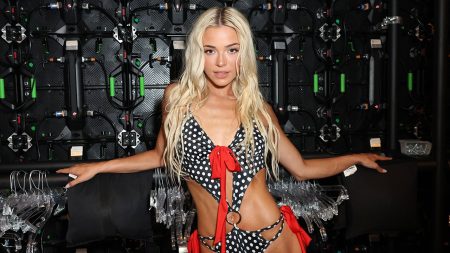Caitlin Clark, a standout player in the WNBA and a finance professor’s study subject, has made waves not just in the world of women’s basketball but also in economic contributions, alongside personal branding of the league. Indiana University’s finance professor Ryan Brewer assessed Clark’s impact on the WNBA’s overall financial landscape, estimating she accounts for an astonishing 26.5% of the league’s activity for the 2024 season. This includes factors such as merchandise sales, attendance at games, and television viewership. Brewer’s analysis suggests that her presence is so formidable that approximately one in six tickets sold during the season can be attributed directly to Clark. Despite her significant influence on the league’s popularity, her current salary of under $80,000 indicates a clear disparity between her economic impact and compensation.
Brewer further elaborated that Clark’s influence extends beyond the WNBA, claiming she generates more than $36 million annually for the Indianapolis economy alone. Such figures demonstrate her extraordinary role as a catalyst for fan engagement and revenue generation in women’s professional sports. Brewer’s enthusiasm for the data underscores the disconnect between Clark’s commercial worth and her salary, which raises questions about how female athletes are valued in professional sports. As Clark continues to attract larger audiences, the financial implications of her presence and performance suggest a need for evaluation of compensation structures within the league.
Throughout the season, evidence of Clark’s impact on viewership was evident, especially during high-stakes playoff games. Clark’s playoff debut attracted a record-breaking 1.84 million viewers, a number that eclipses typical viewership on an NFL Sunday. Her subsequent playoff performance drew an even larger audience of 2.54 million. Unfortunately, despite her individual success and ability to draw viewers, her Indiana Fever team faced elimination, ending their playoff run prematurely. The stark contrast between Clark’s viewership numbers and those of other playoff games, such as the first matchup between the Aces and Liberty that garnered only 929,000 viewers, points to her unique position in augmenting interest in the WNBA.
This year, Clark not only broke records in viewership but also set new attendance benchmarks in the WNBA. Her final regular-season game saw 20,711 fans—a record for the league—further highlighting her ability to attract crowds. This pattern persisted throughout the season, with all of the 14 most-watched WNBA games featuring the Fever, cementing her role as a significant draw for the league. Clark’s influence appears to benefit her teammates as well, who experience heightened attention and notoriety due to her magnetic presence on and off the court.
Teammates of Clark have openly expressed how her talent and popularity have shifted dynamics within the Fever. Point guard Kelsey Mitchell credited Clark for elevating the team’s profile and drawing attention that players might have otherwise lacked. This reflects the reverberating effects of one player on a team, showcasing how Clark’s individual brand has a collective impact on her teammates’ careers and visibility in the sport. Similarly, shooting guard Erica Wheeler emphasized the positive atmosphere that Clark brought into the team environment, indicating that Clark’s lighthearted approach helped the team handle the spotlight and outside pressures with resilience and fun.
Overall, Caitlin Clark represents a pivotal figure in the evolution of the WNBA, serving as both an incredible talent and a critical economic force. Her ability to draw significant viewership and increase attendance denotes a new era for women’s professional sports. Nonetheless, the disparity between her financial influence and her salary calls for a broader conversation about fair compensation in the league, reflecting ongoing challenges within women’s sports. As Clark continues to establish herself as a major player, it is clear that her contributions may redefine not only the WNBA’s marketing strategies but also the future of women’s basketball as a whole.










